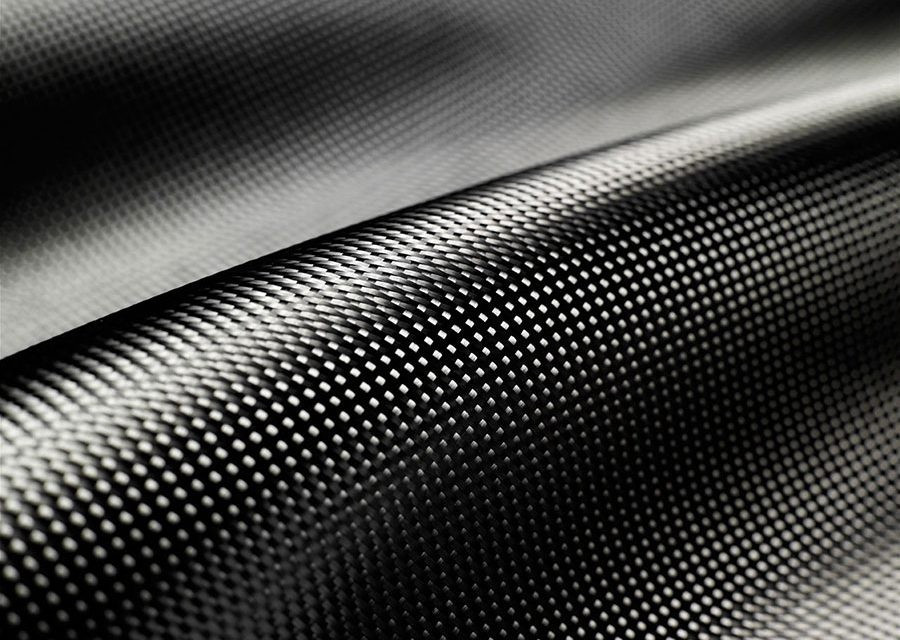Basement Waterproofing: Types, Installation, Benefits
Sterling Heights, United States - January 22, 2024 / Everdry Waterproofing of S.E. Michigan /
In the realm of home maintenance, ensuring a dry and secure basement is paramount to safeguarding your property against water damage and structural issues. One of the most effective solutions for achieving a watertight basement is the use of basement waterproofing membranes. In this comprehensive guide, we will explore the significance of basement waterproofing membranes, their types, installation methods, and the benefits they bring to your home.
Understanding Basement Waterproofing Membranes
What are Basement Waterproofing Membranes?
Basement waterproofing membranes are innovative solutions designed to tackle the persistent challenge of water infiltration in buildings. These membranes are specialized materials strategically applied to the exterior or interior surfaces of a basement’s foundation, forming a robust barrier against water intrusion.
In essence, these membranes act as shields, offering a proactive defense mechanism to protect your home from the potential damages caused by water. They are specifically engineered to withstand external pressures, weather conditions, and soil moisture, ensuring that your basement remains dry and secure.
Importance of Basement Waterproofing
Structural Integrity
Water, when left unchecked, can wreak havoc on a building’s structural integrity. Basement waterproofing membranes play a pivotal role in maintaining the strength and stability of a structure by preventing water from seeping into the foundation. By forming an impermeable barrier, these foundation waterproofing membranes help safeguard the essential components of your home, preventing water-induced deterioration that could compromise its overall stability.
Mold Prevention
Damp and humid conditions create an ideal environment for mold and mildew to thrive. Basement waterproofing membranes not only keep water out but also contribute significantly to mold prevention. By creating a dry and inhospitable environment for mold growth, these membranes support a healthier living space and protect occupants from potential respiratory issues associated with mold exposure.
Preservation of Property Value
The long-term effects of water damage can significantly depreciate the value of a property. Implementing basement waterproofing measures, including the use of membranes, helps preserve the structural integrity and aesthetics of your home. This, in turn, enhances your property’s market value, making it a more attractive and desirable investment for potential buyers.
Understanding the importance of basement waterproofing is the first step toward ensuring the longevity and resilience of your home. In the subsequent sections, we will delve into the different types of basement waterproofing membranes and their respective advantages to provide a comprehensive guide for homeowners and building professionals alike.
Types of Basement Waterproofing Membranes
Sheet Membranes
Overview
Sheet membranes stand out as a popular choice for basement waterproofing due to their simplicity and effectiveness. Composed of materials like wood, bituminous asphalt, or synthetic polymers, these thin, flexible sheets are applied directly onto the exterior walls of the basement. The seamless coverage they provide acts as a robust barrier against water, preventing it from penetrating the foundation.
Advantages
Sheet membranes offer several advantages, including ease of installation and versatility. Their flexibility and thickness allow for adaptation to various wall surfaces, making them suitable for different architectural designs. Additionally, the seamless application minimizes the risk of water-finding entry points, providing comprehensive protection for the foundation.
Liquid Membranes
Application Process
Liquid waterproofing membranes, in contrast to sheet membranes, are applied in liquid form and subsequently cured to form a seamless, flexible barrier. This type of liquid membrane is ideal for irregular surfaces and areas where traditional sheets might be challenging to install effectively.
Flexibility and Adhesion
Liquid membranes excel in their ability to conform to the unique contours of the foundation. They exhibit exceptional adhesion properties, ensuring a tight bond to the substrate. This makes them an excellent choice for areas with complex geometries or joints or where other membrane types might struggle to provide adequate coverage.
Bentonite Membranes
Harnessing the Power of Bentonite
Bentonite membranes leverage the expansive properties of bentonite clay to create a formidable waterproofing barrier. When hydrated, bentonite swells, forming a gel-like substance that effectively seals gaps and cracks in the foundation. This natural approach to waterproofing makes it an environmentally friendly option.
Self-Healing Capability
One of the unique characteristics of bentonite membranes is their self-healing capability. If small punctures or tears occur during or after installation, the bentonite material can swell and fill these gaps, maintaining the integrity of the seal and waterproofing system over time.
Understanding the distinctive features and advantages of each type of basement waterproofing membrane is crucial in selecting the most suitable solution for your specific needs. In the following chapter, we will explore the various methods of installing these membranes, providing insights into the practical application of basement waterproofing techniques.
Installation Methods
Exterior Basement Waterproofing
Excavation
Excavation is a fundamental step in exterior and basement wall waterproofing, involving the careful removal of soil around the foundation to expose the exterior walls. This method allows for a thorough inspection of the foundation and the application of waterproofing membranes directly to the exterior surfaces. Excavation provides an opportunity to address any existing structural issues and ensures that the waterproofing membranes are applied with precision.
Backfilling
Once the waterproofing membranes are in place, the excavated area is backfilled with soil. This process not only secures the membranes but also restores the landscape to its original state. Proper backfilling is crucial in preventing soil settlement and maintaining the integrity of the waterproofing system. It creates a graded slope away from the foundation wall, encouraging water to drain away from the structure.
Drainage Systems
In conjunction with exterior waterproofing, the installation of an effective drainage system is essential. French drains or other drainage solutions are often integrated to redirect water away from the surface of the foundation, complementing the waterproofing membranes and providing a comprehensive defense against water infiltration.
Interior Basement Waterproofing
Membrane Application
Interior basement waterproofing involves the application of waterproofing membranes on the inner walls of the basement. While this method doesn’t prevent water from entering the basement walls or foundation, it redirects water away from the interior space. Interior membranes are typically applied to the foundation walls, creating a barrier between the basement interior and the surrounding soil.
Sealants and Coatings
In addition to membranes, sealants and coatings can be applied to the interior surfaces to enhance the waterproofing system. These products create an additional layer of protection, sealing small cracks and gaps that may be susceptible to water intrusion. Interior sealants and coats are particularly useful in situations where exterior excavation is not feasible or cost-effective.
Sump Pump Installation
To further bolster interior waterproofing, the installation of a sump pump is a common practice. Sump pumps are designed to collect and pump out excess water that may accumulate in a basement. When installed and integrated with interior waterproofing measures, a sump pump provides an active defense against potential flooding, offering peace of mind during heavy rainfall or in areas prone to groundwater issues.
Understanding the nuances of both exterior and interior basement waterproofing methods is crucial for homeowners and building professionals alike. By combining the right materials and techniques, you can create a comprehensive waterproofing system that ensures the longevity and resilience of your home’s foundation. In the subsequent chapter, we will explore the wide-ranging benefits that basement and waterproofing systems membranes bring to your property.
Benefits of Basement Waterproofing Membranes
Prolonged Structural Lifespan
Investing in basement waterproofing membranes contributes significantly to the prolonged structural lifespan of your home. By forming an impermeable barrier, these membranes prevent water from infiltrating the foundation and causing structural damage. Over time, water-induced issues, such as concrete deterioration and the erosion of supporting structures, can be mitigated, preserving the overall strength and stability of the building.
Preservation of Foundation Integrity
Water, when allowed to seep into the foundation, can weaken the structural integrity of the building over time. Basement waterproofing membranes act as a first line of defense, ensuring that the foundation remains dry and resilient. This preservation of foundation integrity not only prevents costly repairs but also contributes to the long-term stability of the entire structure.
Reduction of Structural Repair Costs
The prevention of water damage through effective basement waterproofing translates to reduced repair costs. Waterproofing membranes serve as a proactive measure, eliminating the need for extensive structural repairs caused by water-induced deterioration. The upfront investment in waterproofing becomes a cost-saving measure in the long run, protecting homeowners from the financial burden of extensive repairs.
Increased Property Value
Homes with dry, secure basements are more attractive to potential buyers. Basement waterproofing, facilitated by membranes, enhances the overall appeal and value of a property. Prospective homeowners are often willing to pay a premium for a residence with a well-maintained, waterproofed basement, making it a wise investment for those looking to sell their homes in the future.
Enhanced Curb Appeal
A dry and functional basement contributes to the overall curb appeal of a property. Potential buyers are more likely to be impressed by a home that has taken proactive measures to prevent water damage. The visual and functional aspects of a waterproofed basement can set your property apart in a competitive real estate market.
Positive Home Inspection Reports
When selling a home, positive home inspection reports are crucial. A waterproofed basement, backed by the presence of quality membranes, can result in favorable inspection outcomes. This not only expedites the selling process but also builds confidence in potential buyers regarding the overall condition of the property.
Healthier Living Environment
Beyond structural benefits, basement waterproofing membranes contribute to a healthier living environment by preventing the growth of mold and mildew. Damp basements provide an ideal breeding ground for these harmful microorganisms, which can lead to respiratory issues and allergies. By creating a dry and inhospitable environment, waterproofing membranes ensure the well-being of occupants and promote a healthier indoor atmosphere.
Respiratory Health Benefits
Mold spores released into the air can have adverse effects on respiratory health. Basement waterproofing membranes, by inhibiting the growth of mold, play a crucial role in preventing the release of these harmful spores. This, in turn, contributes to a healthier indoor air quality, benefiting the respiratory health of everyone in the home.
Allergy Prevention
Mold and mildew are common triggers for allergies. Waterproofed basements, free from dampness and mold growth, create an environment that is less conducive to allergens. This is particularly important for individuals with allergies or respiratory sensitivities, providing a safe and comfortable living space.
In conclusion, the installation of basement waterproofing membranes goes beyond mere water protection; it is an investment in the longevity, value, and health of your home. By understanding and leveraging the multitude of benefits these various waterproof membranes offer, homeowners can secure their properties against the challenges posed by water infiltration, ensuring a dry, secure, and resilient foundation for years to come.
Safeguarding Homes with Basement Waterproofing Membranes
In conclusion, basement waterproofing membranes emerge as indispensable guardians of a home’s longevity and value. By creating an impermeable shield against water infiltration, these membranes actively preserve structural integrity, reduce repair costs, and elevate the overall appeal and market value of a property. The health benefits, stemming from mold prevention, further contribute to a safer and more comfortable living environment.
Investing in basement waterproofing membranes is a strategic decision that not only protects against the immediate threat of water damage but also secures the future well-being and financial value of your home. It is a proactive measure that pays dividends by fortifying the foundation, enhancing curb appeal, and providing occupants with a healthy and resilient living space. In essence, basement waterproofing membranes are a cornerstone in the construction of homes that stand the test of time.
Contact the Professionals at Everdry Basement Waterproofing Michigan Today! (586) 698-3030

Contact Information:
Everdry Waterproofing of S.E. Michigan
33533 Mound Rd
Sterling Heights, MI 48310
United States
Jeff Schleuning
(586) 698-3030
https://everdrymichigan.com
Original Source: https://everdrymichigan.com/media-room/



